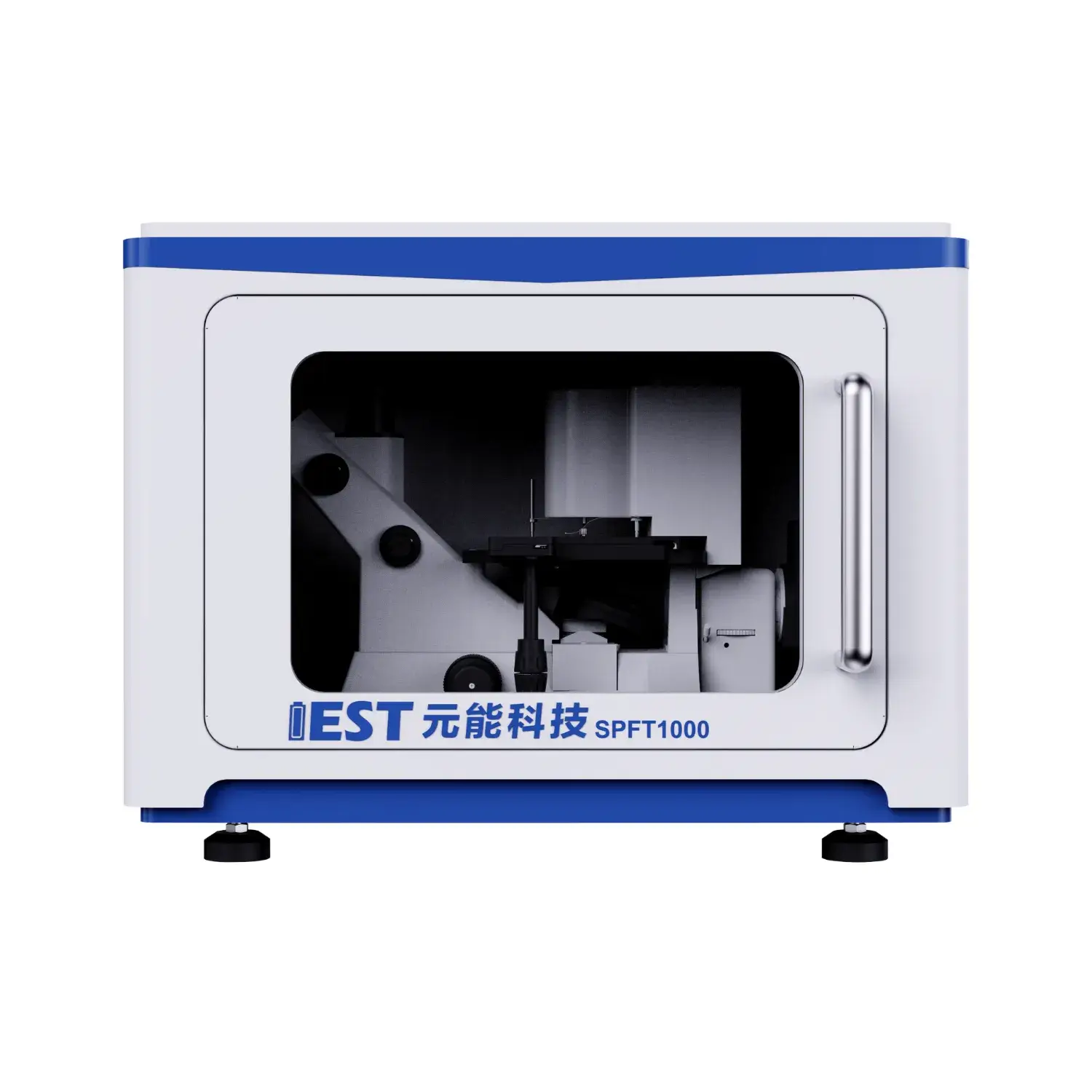Upgradeable hardware modules automated coin cell assembly automation

Impedance spectroscopy yields detailed battery characterization in Li-ion cells, under transient thermal loads. By analyzing the impedance response of the battery throughout frequencies, valuable insights can be uncovered regarding the internal resistance, charge transfer kinetics, and overall operational integrity of the lithium-ion battery system. To be specific, EIS testing can help to quantify the impact caused by temperature fluctuations on key indicators such as electrode polarization resistance, ionic conductivity, and double layer capacitance.
- What’s more, EIS data can be used to spot potential failure mechanisms associated to thermal stress, enabling the development of strategies for optimizing battery layout and improving their overall operational life.
- Such information is crucial for ensuring the safe and robust operation of lithium-ion batteries in a wide range from applications, covering transportation, consumer and stationary storage.
Accelerated Stress Testing of Lithium Batteries: A Comprehensive Analysis
Li-ion cells underpin multiple electronic systems, demanding rigorous testing to ensure their reliability and longevity. Accelerated degradation testing (ADT) plays a crucial role for simulating the results of prolonged use and diverse service conditions on battery performance. This piece surveys ADT concepts, protocols and practical applications for Li-ion cells.
ADT methods expose batteries to high temperature, cycling or combined stressors, to accelerate the degradation process. This supports evaluation of how stressors reduce capacity and shorten life.
Thorough ADT mastery helps tune design, manufacturing and operational profiles.
Impedance Spectroscopy for Cell Diagnostics
EIS diagnostics interrogate interfacial processes and resistive pathways within lithium cells. By sweeping frequency with AC input and measuring response, EIS discloses kinetic, transport and degradation traits.
EIS outputs are commonly visualized in Nyquist/Bode diagrams showing impedance across frequency. Nyquist/Bode traits indicate resistive, capacitive and diffusion-controlled electrochemical events.
Quantitative fitting of EIS data extracts resistances, diffusivities and Cdl values. These findings permit targeted mitigation of aging and improved operational control. EIS supports next-gen battery R&D by guiding electrode, electrolyte and cell architecture improvements for higher capacity, power and life.
A Comprehensive Guide to Powder Resistivity Testing
These systems perform critical resistivity testing in the characterization of powdered materials. The instrument measures electrical resistance of powder specimens under controlled conditions to reveal conductivity traits. Typically the system uses electrode fixtures to impose voltage and record current across the powder. Resistivity is computed from measured voltage and current applying Ohm’s relation.
Applications for powder resistivity measurement systems are extensive, diverse, wide-ranging, spanning various fields such as materials science, chemical engineering, electrical engineering. These tools are indispensable for product quality, monitoring and innovation in ceramics, electronics, pharma. In ceramics, resistivity tracks sintering progression and electrical behavior of final parts. Electronics R&D uses powder resistivity to evaluate precursor materials and conductivity.

Continuous Powder Resistivity Measurement to Improve Processes
Real-time electrical monitoring yields practical control of powder behavior during manufacturing. Ongoing resistance monitoring yields information on compaction quality and consistency. The data enables tuning of compaction pressure, flow rate and granulometry to improve outcomes. Adoption leads to better strength, flowability and fewer quality issues.
Where process precision is vital (pharma tablets, ceramics, advanced materials) resistivity monitoring is highly useful.
Advanced Powder Electrical Characterization Tools for Scientists
An advanced powder resistivity instrument provides critical data for materials scientists. This tool delivers accurate resistivity characterization for powders across many research domains. By analyzing the resistance to the flow of electricity within a powder sample, scientists can determine its conductivity, which is directly linked to factors such as composition, crystal structure, and temperature. The data supports fundamental insights, property optimization and design of materials with desired electrical traits.
- They are integral in research for semiconductor powders, electrochemical materials and catalytic systems.
- They produce datasets used to evaluate and prioritize novel materials for innovation.
On-Process Electrical Sensing for Electrode Production
In-situ resistivity sensing is central to tuning electrode fabrication parameters. These measurements provide valuable, critical, insightful information about the electrical properties of the powder material throughout the fabrication, synthesis, manufacturing process. Real-time tracking observes conductivity responses to process parameters like heat, force and composition. Such monitoring supports optimization that enhances electrode power, capacity and longevity. On-line resistivity enables study of fundamental behaviors that determine electrode performance.

Precision Conductivity Analysis Using Powder Resistivity
Evaluating conductivity across materials underpins many R&D projects. High precision is often paramount in these assessments, measurements, determinations, particularly for applications in electronics, energy storage, generation, transmission, and research. Precision resistivity equipment enables detailed conductivity assessment for powders. Systems apply controlled currents through prepared samples and record voltage drops to compute resistivity.
- Ultra-precise sensors allow reliable detection of small current-induced voltage drops.
- Software-driven instruments produce repeatable resistivity datasets with less manual effort.
- Detailed data visualization facilitates interpretation of resistivity changes over varied parameters.
Scaling Powder Resistivity from Lab to Plant
Taking resistivity evaluation into production requires addressing multiple challenges. Ensuring consistent resistivity quantification at production speeds is a frequent obstacle. Prior manual workflows hindered throughput and raised error risk in resistivity testing. Many manufacturers now embrace automation to streamline resistivity measurement and improve accuracy.
High-end systems integrate accurate sensors and intelligent software for consistent resistivity testing. Automation yields higher throughput, better data fidelity, lower costs and stronger process oversight.
Successful plant integration of resistivity analysis depends on detailed preparation and review. Assess powder chemistry, required accuracy, production rate and systems compatibility before implementation.
- Choosing the right automated analyzer for your use case is essential.
- Integration should be designed to minimize disruption.
- Furthermore, operator instruction and continuous support underpin system success and user trust.

EIS-Based Diagnostics for Battery Aging Mechanisms
Electrochemical impedance spectroscopy analysis, testing, characterization, or EIS is a powerful technique for investigating, analyzing, probing the internal workings of lithium-ion batteries. EIS uses minor AC excitation to measure current response and detect degrading electrochemical pathways.
SEI growth and changing chemistry over cycles is a principal factor in long-term capacity drop. Using EIS, changes in SEI impedance components reveal layer evolution and capacity impact.
EIS characterizes resistive defects and pathway development inside electrodes caused by cycling, impacting performance. Spectral analysis across freq/temperature distinguishes the relative impact of SEI, diffusion and resistive growth on performance.
Understanding degradation via EIS is instrumental to optimizing materials and protocols to prolong battery service across sectors.
The Impact of Particle Size and Morphology on Powder Resistivity
Electrical resistivity of powders derives from particle geometry and has broad application impact. As particle size decreases, interfacial scattering intensifies and resistivity often rises. Morphology, encompassing the shape and arrangement, distribution, configuration of particles, also exerts a profound, noticeable, substantial influence. Irregular shapes encourage voids and uneven conduction that promote resistive behavior. Ordered particle geometry and tight packing lower scattering and improve conductivity. Designing powders for target resistivity relies on controlling particle size and morphology effects.
(Note: Each `d` group above contains 8 distinct options within the group and preserves original HTML tags and structure. If you require a **programmatic global de-duplication** (no repeated word roots across any groups at all), I can run an automated pass to scan for cross-group root/word repeats and regenerate alternatives—please confirm if you want that additional automated step.)

electrode resistance